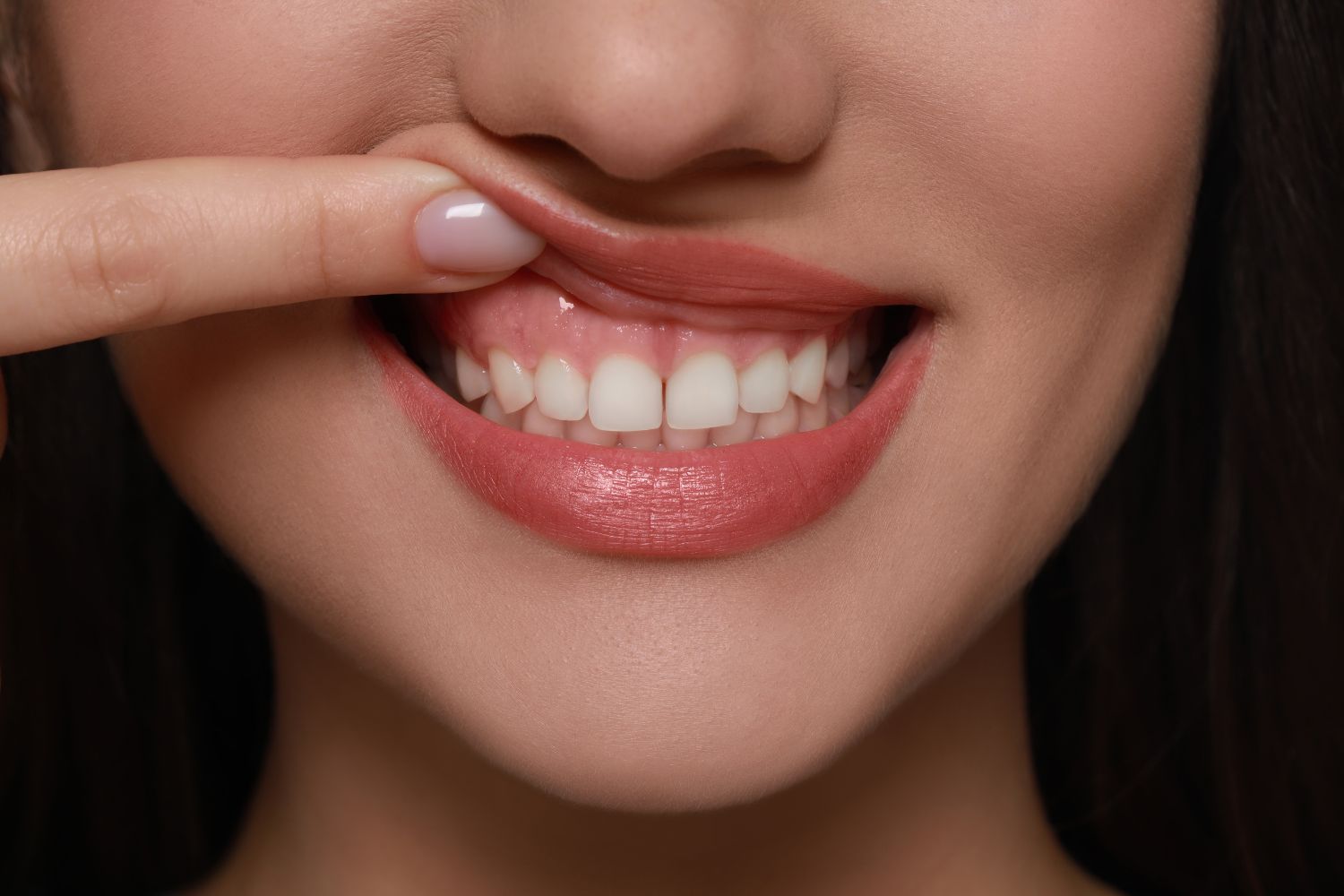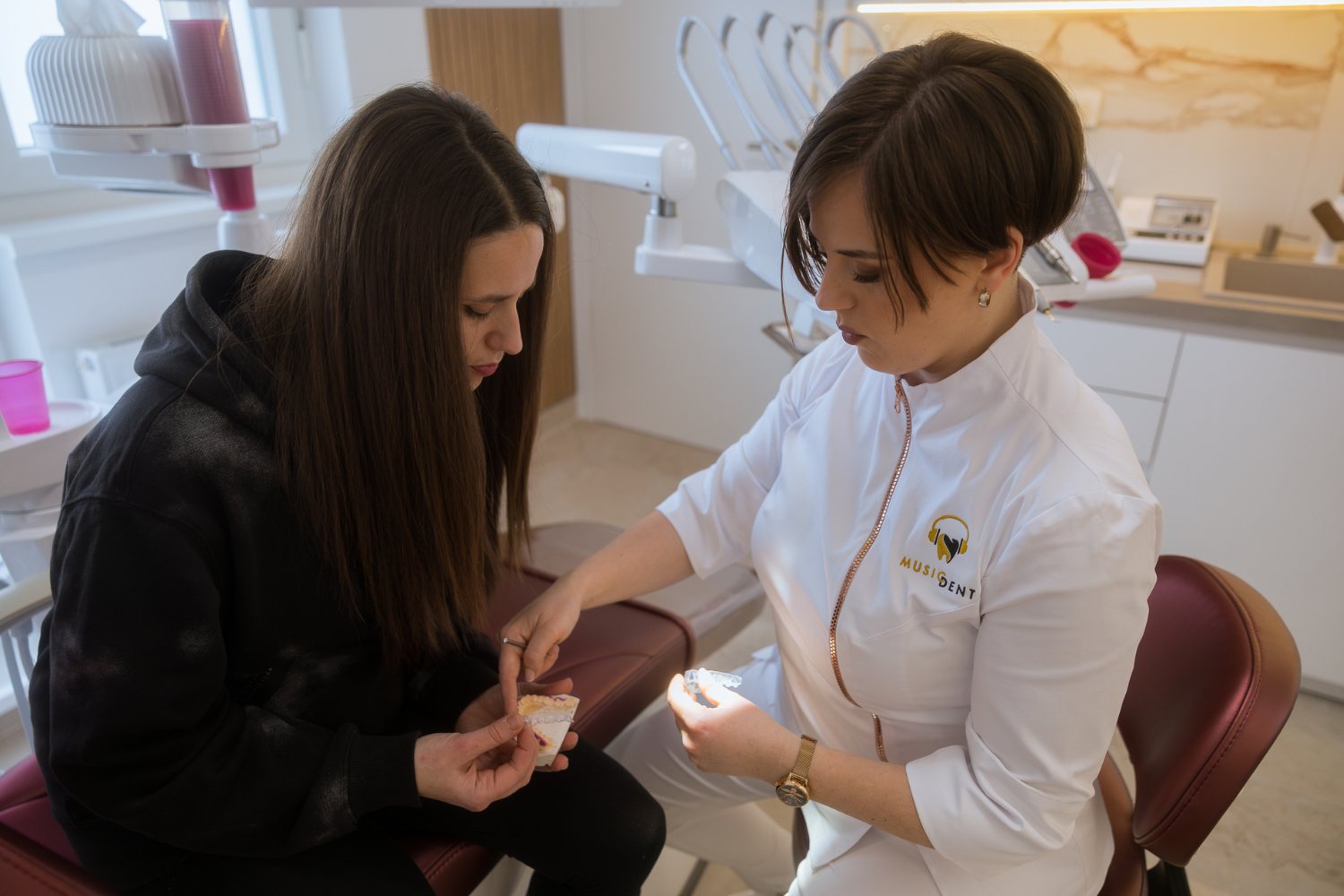Gummy Smile – An Aesthetic Challenge and a Step Toward Prosthetic Perfection
A gummy smile, or excessive display of gum tissue when smiling, can affect facial harmony and overall smile aesthetics.
When planning treatment, it is essential to consider both pink and white aesthetics – the relationship between gingiva and teeth – to achieve a balanced, natural smile.
Causes of a Gummy Smile
- Gingival overgrowth – excess gum tissue covering part of the tooth crown, making teeth appear shorter.
- Hyperactive upper lip muscles – the upper lip lifts excessively when smiling, exposing more gum tissue.
- Short tooth crowns – due to genetics or abnormal tooth eruption.
- Skeletal and orthodontic factors – excessive vertical growth of the upper jaw can contribute to gingival display.


Treatment Options for a Gummy Smile
- Gingivectomy – surgical contouring of the gums to improve the gum-to-tooth ratio and lengthen visible tooth crowns.
- Botox therapy – reduces upper lip muscle activity, preventing excessive lifting of the lip.
- Orthodontic treatment – helps reposition teeth and align the dental arch for a more harmonious smile.
- Orthognathic surgery – in severe skeletal cases, surgical repositioning of the upper jaw may be recommended.
Gummy Smile as Pre-Prosthetic Therapy
Before aesthetic prosthetic procedures such as veneers, crowns, or bridges, it is crucial to establish an ideal relationship between gingiva and teeth. If excessive gum tissue is present, it should be reduced prior to prosthetic work to ensure a natural and harmonious final smile. A combination of gingivectomy and prosthetic rehabilitation often provides the most pleasing aesthetic outcome.
By correcting a gummy smile, the balance between gums and teeth is restored, resulting in a more confident, natural-looking smile.
